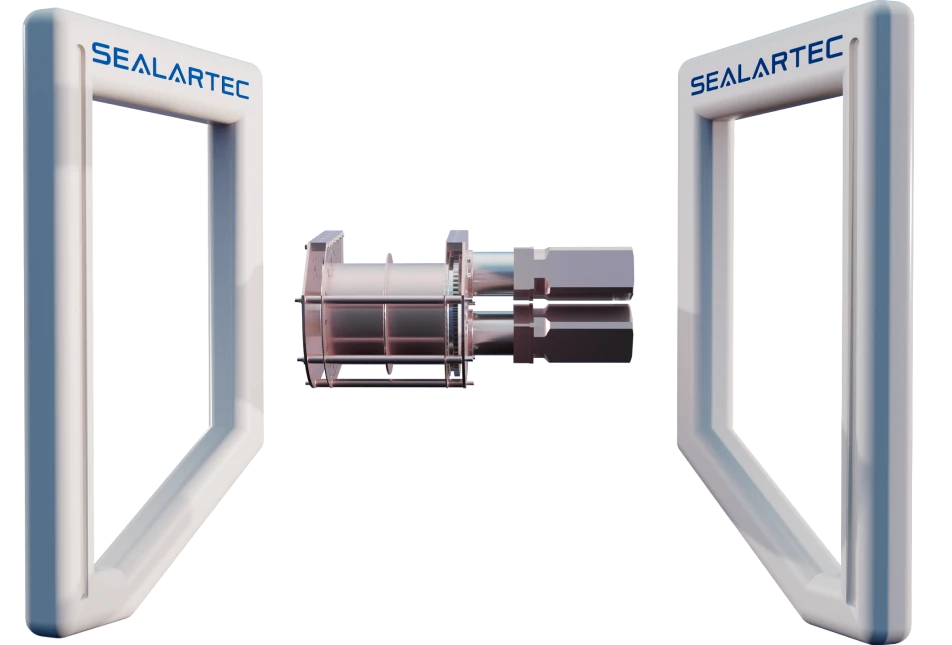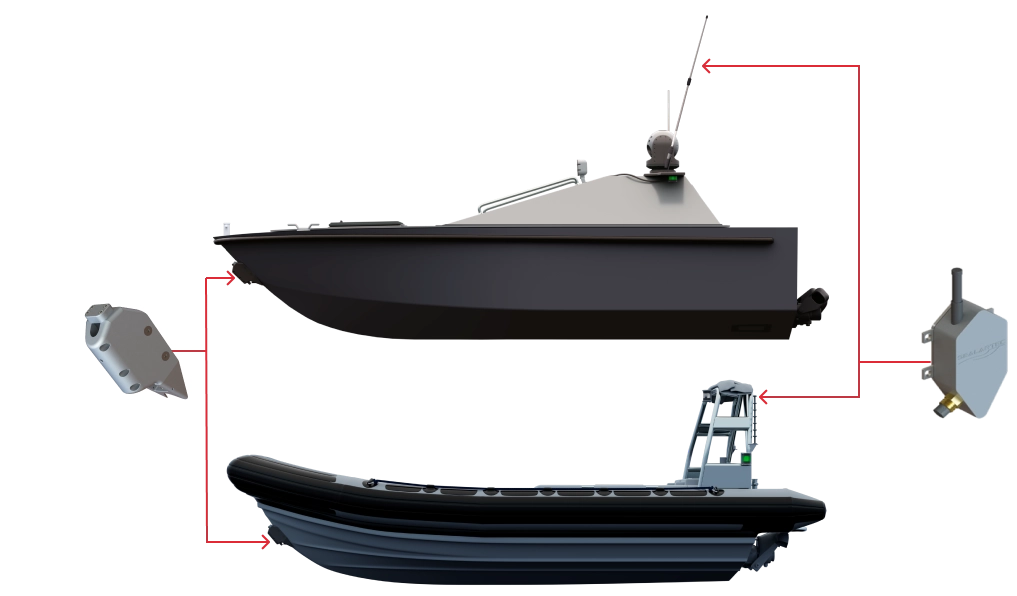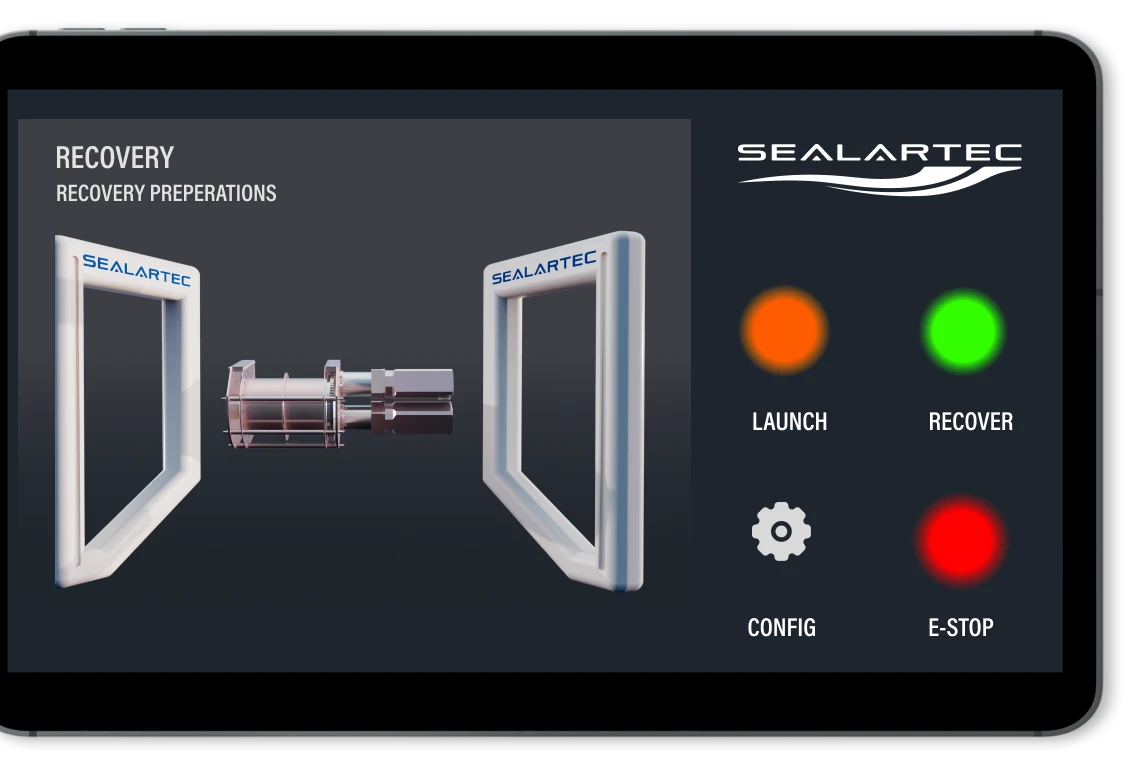ALR-S for
Stern Recoveries
Converting a standard stern ramp to a fully autonomous recovery system is feasible with ALR-S.
Sealartec’s stern ramp technology can be seamlessly integrated into both new vessels and existing platforms, enabling the fully autonomous and safe recovery of both USVs and manned boats in sea states up to 6.
Today, amongst our clients are tier one companies in the civilian and defense market alongside government clients.
ALR-S
Autonomous Recovery for Stern System

Servo Hauling Winch
Capture System for Stern Ramp
Capture System for Stern Ramp
- Fully Autonomous
- Operational to Sea State 6
- Diminishes Recovery Hazards
- No More- ‘Drive by Force’ Up the Ramp
- Fast Recovery < 20 sec
-
Add-On Solution- Designed to be Fitted
to Existing Stern Raps or Newly Built Platforms
Boat connection unit
Bow Capture Unit
- Fits any Boat
- Compact Design
- Quick Release
- No Need to Reinforce Boat Structure
- 12V dC Mini Hydraulic Unit

LPS
- Real Time Localization
- Accurate & Reliable Data
- 3 Sensing Layers Combined by Data Fusion
- 1 Day Installation
command & Control

User Friendly
Intuitive user interface touch screen monitor
Intuitive user interface
touch screen monitor
safety
Additional Hand Held Safety controller with push butons
Additional handheld safety
controller with push buttons
connection
Standalone or connected to ship command and control
Standalone or connected to ship command and control
requirements
Configurable for user requirements
Configurable for user requirements
Stern Recovery process
Identification & Capture - side recovery
- Drive boat to a wide capture zone aft of stern ramp
- Match boat speed to ship speed
- ALR-S identifies & captures boat autonomously
- Boat captured and reduces throttle to zero
- Boat hauled onto stern ramp under controlled tension
THE CHALLENGE- STERN RAMPS L&R
Successfully navigating a boat up the ramp requires advanced driving skills due to the high relative speed, resulting in substantial kinetic energy and impactful loads. The increased relative velocity induces bow motions, leading to positioning inaccuracies and heightened slamming loads on the stern ramp. The critical phase is when the boat, with higher relative velocity, maneuvers aft of the ship, requiring precise handling to fit into the notch. However, turbulent wake and the ‘sloshing’ effect diminish maneuverability significantly leading to collisions with the ship’s stern.
Consequently:
Entering the stern in high sea states is perilous and often requires multiple attempts.
The boat operator needs exceptional skill, daring, and extensive training.
Recovering a USV up a stern ramp is practically impossible in high sea state using this old-school methodology